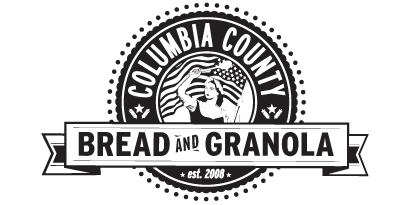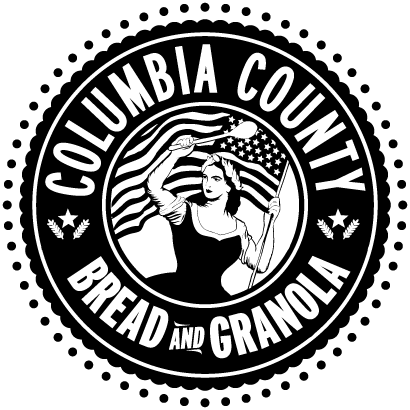
The Wheat Monster Pt1
Any casual observer of our current culture could easily draw the conclusion that Americans are terrified of two things; zombies and wheat. Zombies, I get. Who wouldn’t try to avoid those insidious, entrails-dragging, mouth-frothing shufflers who want to eat our brains?
But, wheat? Really…?
I mean, what happened? Why this sudden and seemingly irrational fear of wheat? Weren’t we all raised to think of wheat as “the staff of life?” But look at her now – kicked about and scorned like some spoiled Hollywood harlot.
So is it all about gluten? And if it is all about gluten, would it make any difference if I pointed out that wheat doesn’t actually contain gluten? Don’t believe me? Take a single solitary grain of wheat (or, better yet, take a handful), soak the grains, let them sprout, keep them moist and watch them mature into blades of grass several inches long. Now, squeeze all those blades of grass and extract a dark green, wonderfully sweet juice. Drink it. Go ahead. Fear not because wheat grass juice contains no gluten. And why not? Gluten is a composite of two protein chains that conjoin when wheat starch (euphemistically known as flour) is manipulated with water in a process generally known as kneading.
But let’s go back to that handful of wheat. This time, instead of sprouting the grains, put them in your mouth and chew. And chew. And chew. After several minutes of chewing, you will begin to sense that the wheat berries have developed a consistency not unlike chewing gum. Spit that little wad of “gum” into your hand and introduce yourself to gluten. That little gummy ball has been washed free of starches by the action of your chewing and saliva and, for the most part, the other component parts that comprise wheat (bran, germ). So what’s left are albumins and proteins. And, of the various protein components found in wheat, two proteins; Gliaden and Glutenin, have linked up to form bonds bakers have dubbed, “gluten.”
For traditional bakers, gluten is a wonder - a thing that can be stretched and kneaded into film-like layers and, when this happens (and the goal is to make bread), those layers capture gases that are created when yeast is introduced into the equation. Yeast, a fungus, is absolutely critical to this story because yeast loves wheat starch - loves it - and happy yeast beget more yeast and this process - yeast eating and multiplying and passing gas is what allows dough to rise and thus, become bread.
Okay, but when did this ancient process of manipulating milled wheat (flour) and water to form gluten that then traps gases expelled by yeast - when did this once amazing, life-sustaining process become so horrible? After all, haven’t we been eating bread for a millennium? The Egyptians, the Romans, and, gauging by analysis of their tarter, even our friends the Paleo’s, have been eating grain and doing just fine. Prospering actually.
So, what changed…?
Next….Gut Tectonics and the absolute necessity of a sourdough starter.
Doug
But, wheat? Really…?
I mean, what happened? Why this sudden and seemingly irrational fear of wheat? Weren’t we all raised to think of wheat as “the staff of life?” But look at her now – kicked about and scorned like some spoiled Hollywood harlot.
So is it all about gluten? And if it is all about gluten, would it make any difference if I pointed out that wheat doesn’t actually contain gluten? Don’t believe me? Take a single solitary grain of wheat (or, better yet, take a handful), soak the grains, let them sprout, keep them moist and watch them mature into blades of grass several inches long. Now, squeeze all those blades of grass and extract a dark green, wonderfully sweet juice. Drink it. Go ahead. Fear not because wheat grass juice contains no gluten. And why not? Gluten is a composite of two protein chains that conjoin when wheat starch (euphemistically known as flour) is manipulated with water in a process generally known as kneading.
But let’s go back to that handful of wheat. This time, instead of sprouting the grains, put them in your mouth and chew. And chew. And chew. After several minutes of chewing, you will begin to sense that the wheat berries have developed a consistency not unlike chewing gum. Spit that little wad of “gum” into your hand and introduce yourself to gluten. That little gummy ball has been washed free of starches by the action of your chewing and saliva and, for the most part, the other component parts that comprise wheat (bran, germ). So what’s left are albumins and proteins. And, of the various protein components found in wheat, two proteins; Gliaden and Glutenin, have linked up to form bonds bakers have dubbed, “gluten.”
For traditional bakers, gluten is a wonder - a thing that can be stretched and kneaded into film-like layers and, when this happens (and the goal is to make bread), those layers capture gases that are created when yeast is introduced into the equation. Yeast, a fungus, is absolutely critical to this story because yeast loves wheat starch - loves it - and happy yeast beget more yeast and this process - yeast eating and multiplying and passing gas is what allows dough to rise and thus, become bread.
Okay, but when did this ancient process of manipulating milled wheat (flour) and water to form gluten that then traps gases expelled by yeast - when did this once amazing, life-sustaining process become so horrible? After all, haven’t we been eating bread for a millennium? The Egyptians, the Romans, and, gauging by analysis of their tarter, even our friends the Paleo’s, have been eating grain and doing just fine. Prospering actually.
So, what changed…?
Next….Gut Tectonics and the absolute necessity of a sourdough starter.
Doug
Leave a comment
Comments will be approved before showing up.





